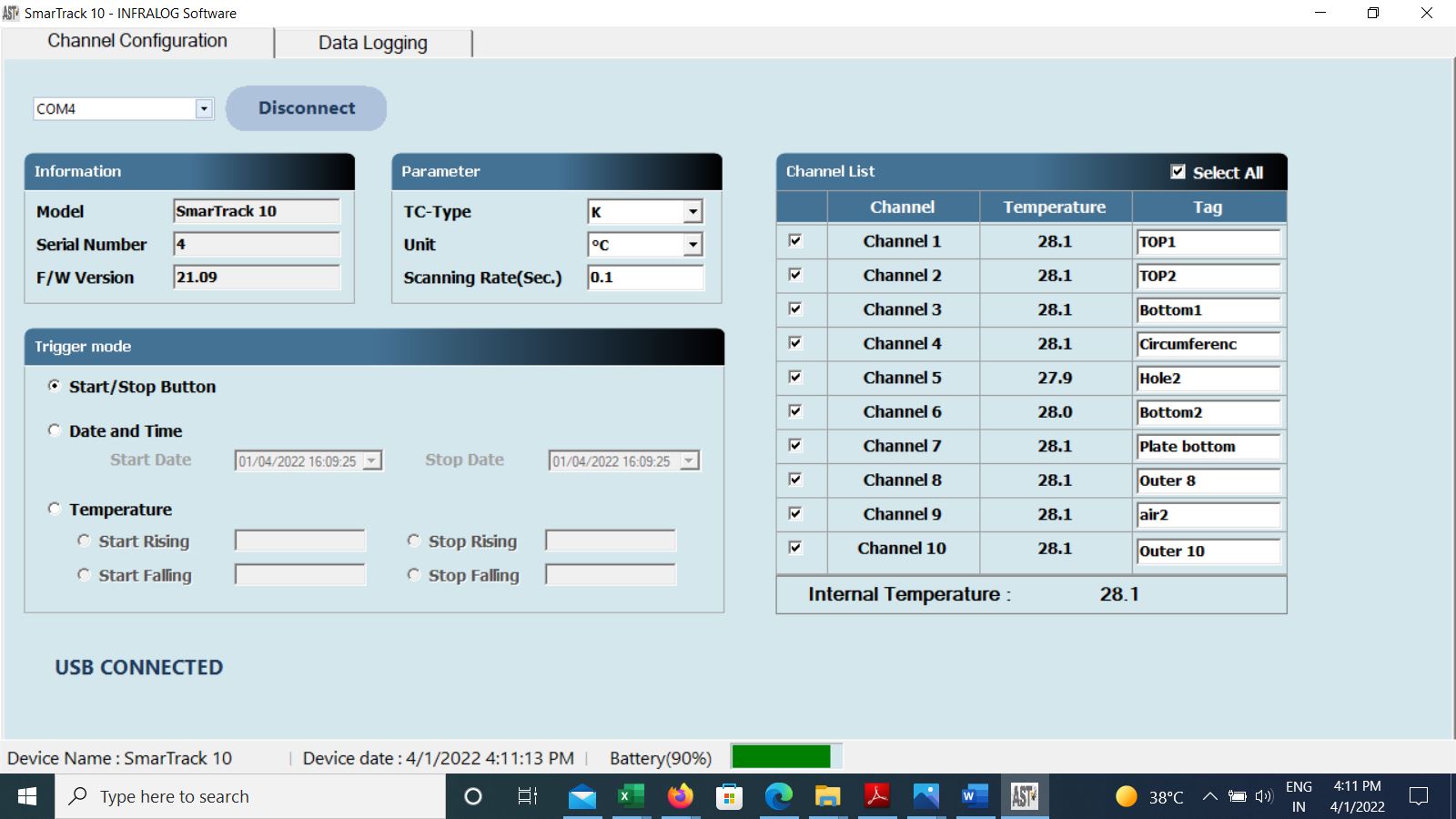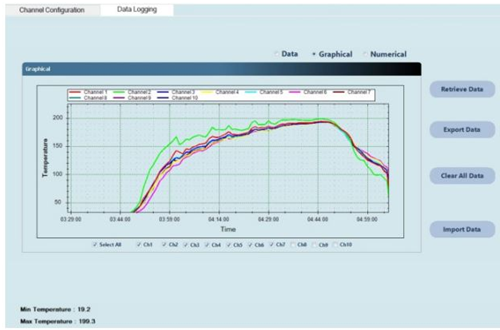- Home
- About
- Products
- Contact Temperature Sensors
- Cables & Wires
- Mineral Insulated Cables
- Nickel & Thermocouple Alloy
- Industrial Heaters
- Heating Cables and Mats
- Non Contact Temperature Sensors
- Industrial and R&D Furnaces
- Temperature Calibrators
-
Circulating Chiller
- Services
-
Special Products
- Thermal Profiling System
- Industries
- Resources
- Contact Us
- Shop
Thermal Profiling Importance in Ink Printing
The print quality of any material like automotive decals, garments, and sticker depends on curing the inks in conveyor driers and wicket driers at specific temperatures and duration.
Curing inks is comparable to baking cakes in that it takes time. Gas heats the ovens, and air circulates to transfer the heat to the ink (cakes) and cloth (pan). Heat is transported to the ink during the heating/curing process via convection from the air, but it is also transferred by conduction. The nearby ink (outer layer of cake) and the cloth are the two sources of heat conduction. The fact that time is just as essential as the temperature setting is due to conduction.
Even if your oven is set at a high temperature, it will take time for the heat to be transported to the center of the ink. A pan is normally an excellent heat conductor for baking, however, for ink drying, the material/cloth is a heat sink rather than a heat conductor. The quantity of heat sink is determined by the material/fiber composition and thickness, as well as the level of moisture in the fabric.
Before the material/cloth begins to heat up, for example, moisture must be eliminated from it.
 Understanding how ink warms up on various materials will help you regulate your oven settings and belt speeds. Keep a close eye on the ink temperature in your dryer. It's crucial to keep track of mapped dryer temperatures during different times of the day, throughout the year, and during varied weather conditions. Checking the cure at the start of each print run is also a good practice. When you're trying out new sorts of inks or print characteristics like high density or metallic printing, it's a good idea to monitor the temperature of the ink film.
Understanding how ink warms up on various materials will help you regulate your oven settings and belt speeds. Keep a close eye on the ink temperature in your dryer. It's crucial to keep track of mapped dryer temperatures during different times of the day, throughout the year, and during varied weather conditions. Checking the cure at the start of each print run is also a good practice. When you're trying out new sorts of inks or print characteristics like high density or metallic printing, it's a good idea to monitor the temperature of the ink film.
Map the ink temperature to your individual procedure, oven settings, ink deposit, and clothing type using a graph.
Conventional Method for Temperature Monitoring
Generally, in most printing industries, the temperature of the material is monitored via the heat zones temperature of the dryer. However, this assumption of the ink temperature from the heat zone is wrong. Due to convection, radiation, and some heat losses, the actual temperature of the material varies with the dryer's temperature, which will lead to inaccurate monitoring of the curing process resulting in poor quality of products.
Consequences of Improper temperature profiling on print Quality: -
- An under-cured print is the most typical cure defect you'll encounter. This is frequently caused by one or a combination of factors, such as a curing oven set at too low a temperature, a conveyor speed that is too rapid, a malfunctioning or underperforming oven, or even extremely strong or cold air currents passing through a shop.
- Improper curing can result in visible cracks in ink on the material/fabric.
- Over curing also leads to dye migration.
Indigenous Solution Provided by Tempsens
These problems can be resolved if we closely monitor the curing temperature for a specific time interval. Here, comes the role of our indigenously designed and developed in India Smartack 10 data logger and Thermal barriers. With these temperature profiling systems, one can closely monitor and optimize their Ink curing duration and temperature. One can get a temperature monitoring system of the coating line by attaching a thermocouple to the product like vinyl sheets decals and getting the actual temperature of the product in the data logger. The data logger needs protection from the prevailing temperature in the curing oven, which is done by keeping the data logger in the thermal barrier.

After the completion of the process, one can download the data from the data logger and convert it to meaningful information in SmartLog Software developed by TEMPSENS. After analyzing the information one can take quick and accurate decisions to solve the curing problems leading to increased quality and productivity.
 A SCHEMATIC VIEW OF WICKET DRIER IN AN INDUSTRY.
A SCHEMATIC VIEW OF WICKET DRIER IN AN INDUSTRY.


For More Details- https://tempsens.com/catalog/thermal-profiling-system.html


